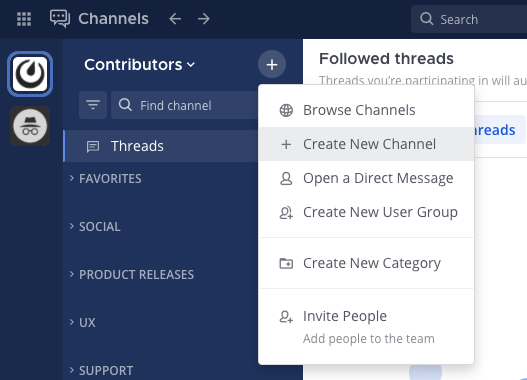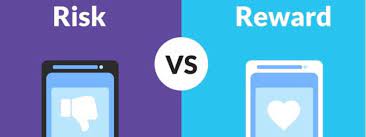– What is a digital identity?
Digital identity is people’s presence online, consisting of what people post and share, and how they engaged and treat other people using digital tools. Blogs, Twitter, and portfolios are forms of digital identity. People show who they are, how they behave and what they want to express in these posts for their own benefit. For example, Digital identity could attract potential employers and create career paths. From their targets, their lifestyles and their way to design and create the posts, employers could figure out whether they fit the company’s culture and value. Certainly, digital identity might also be detrimental since it may cause privacy concern such as leaking personal information to strangers. In conclusion, digital identity is a double-sided sword that could showcase people for their own benefits, but is also possible to bring harm (Stoller, 2016).
– How do personal versus professional approaches to digital identity affect social media use?
The personal approach to digital identity mainly focuses on self-presentation online. People always use digital platforms such as social media as their digital leisure space, which allows them to express themselves, share their lifestyles and personal obsessions, and form communicative interactions with others. In this case, social media becomes a platform for people to perform ‘role-play’ and ‘identity-making’, for example, showcase who they are, what they like and what are their perspectives and thoughts to others, for the purpose of obtaining self-leisure, community belongings and networking, and expressing freely (Spracklen, 2015). Take me as an example, I always post joyful moments of my life on Instagram, including life photos, random thoughts to a book or a movie, hobbies, etc. Since Instagram allows others to like and comment my post, I gained plenty of followers who share the same hobbies or life attitudes as me and initiated great and pleasant community networks together.
The professional approach to digital identity via social media is slightly different. Although it is also about ‘role-play’ and ‘identity-making’, its purpose is not only to gain personal digital leisure or showcase people themselves, but to interpret their professional values, competencies and experience, aiming to achieve inter-professional communication and explore career paths (Mahboob et al., 2019). Linkedin is a great example that people build up their professional profile by listing their education and work experience, key competencies and professional achievement. This professional identity may attract potential employers to get in touch based on some values and competencies they appreciate, and also multi-disciplinary professionals who wants to develop networking and communication to achieve individual professional growth.
– How do digital identities converge in networked publics – what are the impacts and benefits?
Digital identity becomes more and more important in public networks that it brings security and convenience for people’s daily technology-based networking. For instance, the simple digital identity people use every day is the username and password for their accounts. Username and password conduct identification and authentication to ensure it is the right person to log in the account, to prevent account theft and private information leak. Thus, people are able to conveniently and safely perform transactions via e-banking, visa or work permit applications and other daily activities fully online instead of travelling in person (Horton, 2022).
However, digital identities also bring negative impacts. The priority concern is definitely the erosion of privacy. People might feel uncomfortable when their online activities are monitored by the system, although it is for security purposes. Also, the personal information typed in is also owned by the system, for instance, the credit card company, which cause potential information security concern because people cannot ensure their information not to leak (Horton, 2022).
– Can a digital wallet provide trust in networked publics?
Digital wallet is widely used by the public today and it is convenient for daily payment that by adding the credit or debit card information to the app, people can directly pay by the digital card stored in the phone instead of bringing the physical card. It is considered safe and trustworthy by many people since it has multiple security layers. The digital wallet transactions are protected by the wallet app itself, the credit card company and the credit or debit union that issued the card, to prevent the money to be unreasonably held by retailers and the information to be revealed to retailers. However, privacy concern still exists for digital wallet. Although the security layers ensure the transaction security and information privacy to retailers, the card information is owned by the app, card companies and card unions. Whether they will not leak the information cannot be ensured. Besides, if someone loses his or her phone and the phone is without passwords, anybody else can use the digital wallet to pay, causing information leak and huge financial loss (Citizens Bank, n.d).
Comment:
Reference:
Horton, C. (2022, April 26). Digital Identity – challenges and threats. Digital Identity – challenges and threats | THINK Digital Partners : THINK Digital Partners. Retrieved January 27, 2023, from https://www.thinkdigitalpartners.com/news/2022/04/26/digital-identity-challenges-and-threats/
Mahboob, U., Jawed, S., & Yasmeen, R. (2019). Digital Professional Identity: Dear Internet! who am I? Education for Health, 32(1), 33. https://doi.org/10.4103/efh.efh_232_17
Spracklen, K. (2015). Identity-Making and Social Media. In: Digital Leisure, the Internet and Popular Culture. Leisure Studies in a Global Era. Palgrave Macmillan, London. https://doi.org/10.1057/9781137405876_6
Stoller. Eric. “What is Digital Identity?” Youtube, uploaded by University of Derby, 25th November 2016, https://www.youtube.com/watch?v=u0RryRbJza0
What are Digital Wallets and are they safe? | citizens bank. (n.d.). Retrieved January 27, 2023, from https://www.citizensbank.com/learning/is-digital-wallet-safe.aspx



Hey Wanqi, First of all, I loved reading your blog. It clearly states everything that was asked in simple and…
Hi Wanqi, Your paragraph provides a good example of how an effective PLN can help with both in-course and post-course…
Hi Qinjiang, After reading your blog it gave me a lot of new insights. I agree with your article about…
Hi Qinjiang, First of all after reading your thoughts, I agree with you about digital identity not only to get…
Hello Wanqin, I really enjoyed reading your blog post, it was very insightful! I really liked how you mentioned that…